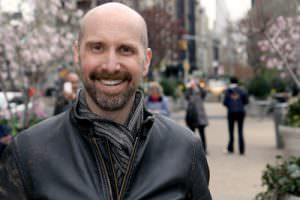Bird Box‘s VFX Supervisor on the Monster You Can’t See
What happens when Marcus Taormina tells people that he was the visual effects supervisor on the wildly popular Netflix film Bird Box?
“People have a ton of questions,” Taormina says, “but the central one is the creature question. I tell them that there is a lot on the editing room floor.”
What Bird Box’s invisible malefactors actually look like is one of the many ambiguities in the film that have preoccupied the Internet since Bird Box bowed over the Christmas holidays. Nielsen backed up Netflix’s claim that 45 million accounts have viewed Bird Box, and Netflix now says that an incredible 80 million member households have watched the film.
“There was some really cool stuff with the presence”—Taormina’s word for the film’s camera-shy evil-doers—“I can’t describe it, but I fell in love with it. It revealed, but it didn’t reveal, but it was all scrapped for a ‘less is more’ approach,” he says.
It’s understandable if the VFX guy on a creature film has a hard time letting go of…the creature, but once the decision was made, Taormina says the film was “a pleasure to make.” He embraced the supernatural subtlety in order to support Oscar-winning director Susanne Bier’s vision for Bird Box, which itself was the adaptation of the vision of Josh Malerman, who wrote the (now) best-selling eponymous novel. Taormina’s collaborative spirit paid off, so much so that his peers in the Visual Effects Society nominated Bird Box for Outstanding Supporting Visual Effects in a Photoreal Feature.
A spectacular early action sequence establishes the film’s apocalyptic premise—people are killing themselves en masse in the most grisly ways imaginable—and two effects-supported moments in particular indelibly convey the horror of the mayhem. In one, the main character Mallory’s sister Jessica (Sarah Paulson) calmly steps in front of an oncoming truck; in the other, a woman who had been trying to help the pregnant Mallory (Sandra Bullock) escape a stampeding crowd changes her mind and gets into the front seat of a car engulfed in flames. “I knew that [fire] scene had to look good when I read the script,” says Taormina.
The on-location shoot was specially lit so the visual effects team wouldn’t have to digitally create the complicated play of firelight inside the car; both a pristine car and a charred car were extensively scanned and photographed, as was the actor in the scene; in post-production an elaborate “fire and char” timeline was mapped out and built into the shots to convey the seemingly instantaneous inferno.
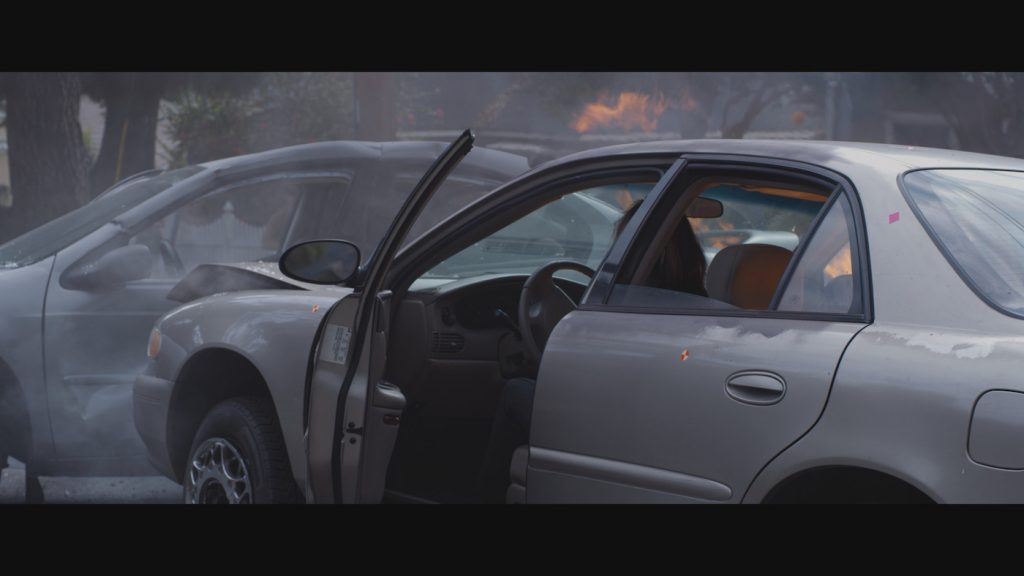
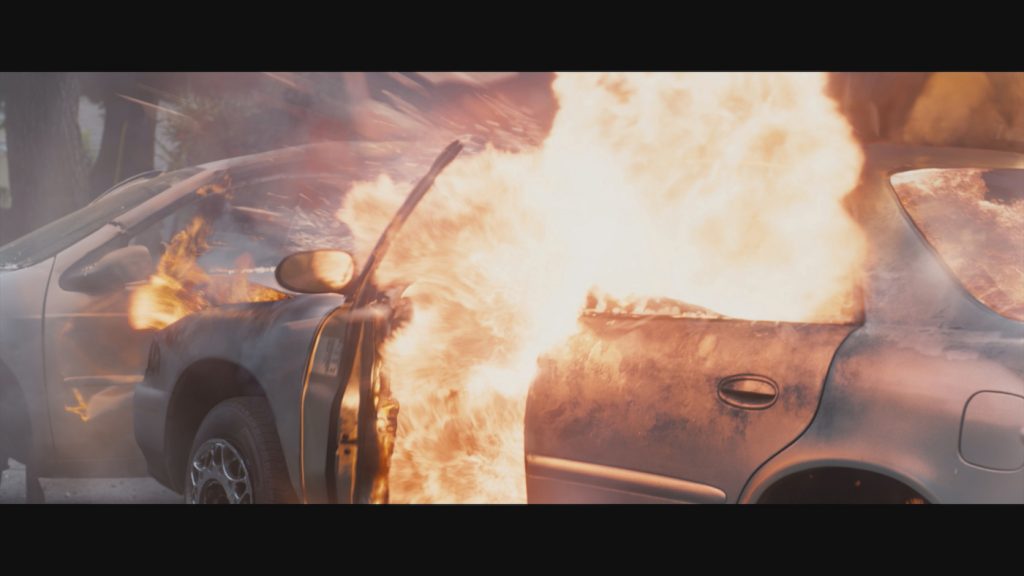
The shocking realness of those early suicides is one example of why Bird Box required close to 200 digital effects artists. Their alchemy is even more evident (or hidden, as it were) in the sequences where Mallory shoots river rapids in a rowboat blindfolded with two kids in tow. Taormina says his job, first and foremost, was not to interrupt the viewer’s feeling of being immersed in the extreme natural beauty of the location, the Smith River in California’s Del Norte County.
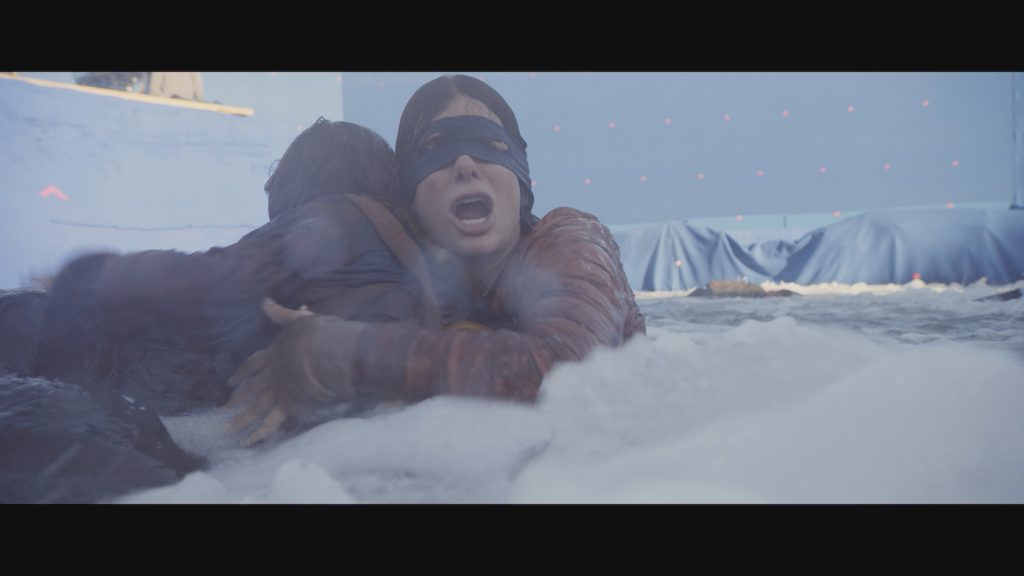
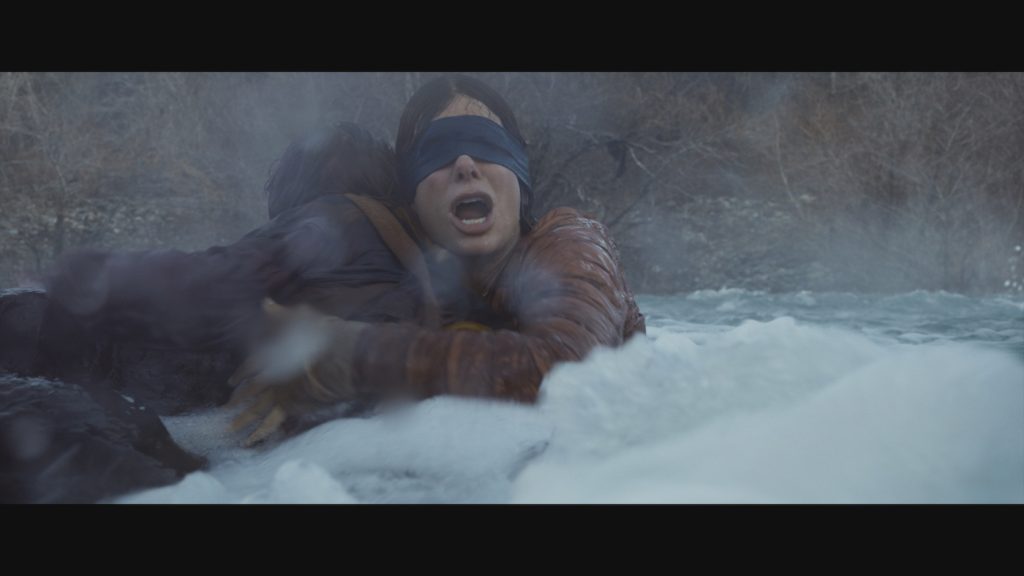
He and his team went to extraordinary lengths to digitally capture the river locations on shoot days so they could use the data when it came time to face-replace stunt doubles or green screen Bullock and costars into the action. For the rapids shoot, the effects team employed three digital cameras to correctly capture the immensity of the river; made multiple rapids runs using a 360-degree cyclorama camera; and made ground and aerial lidar scans–to name just a few of the techniques in play. Taormina proudly points out that 85 percent of the rapids scene use digital effects in some way, and in a sizable chunk, the water surface is entirely digital. Still, the continuity of the action is so unbroken that it frequently seems that—maybe? Possibly? No, it can’t be!—Bullock did her own stunts.
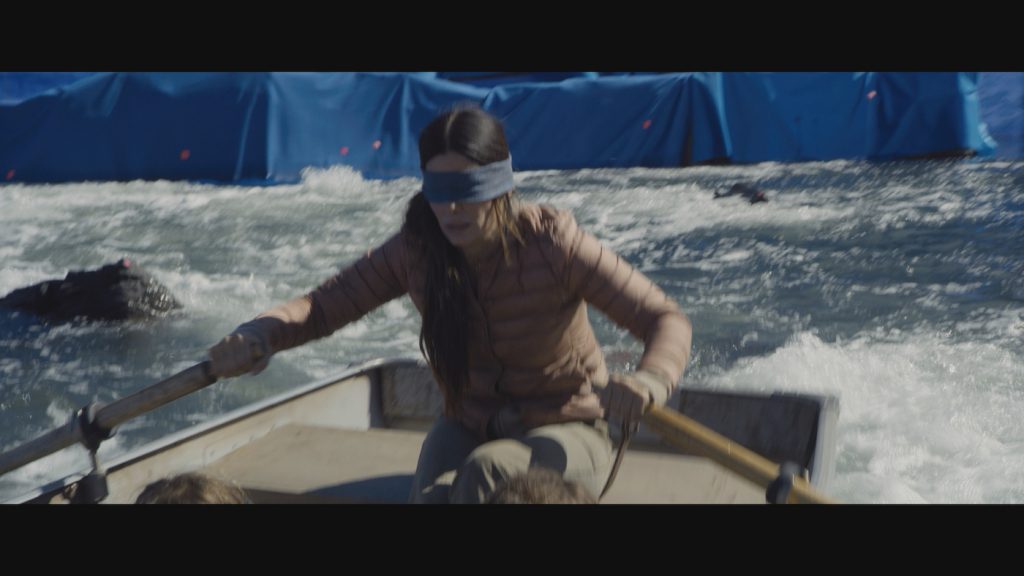
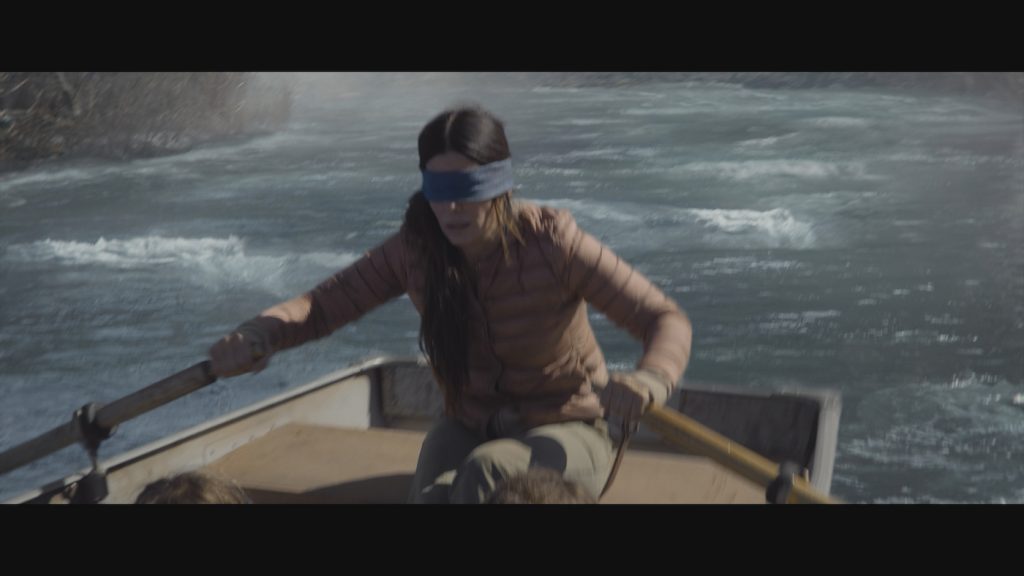
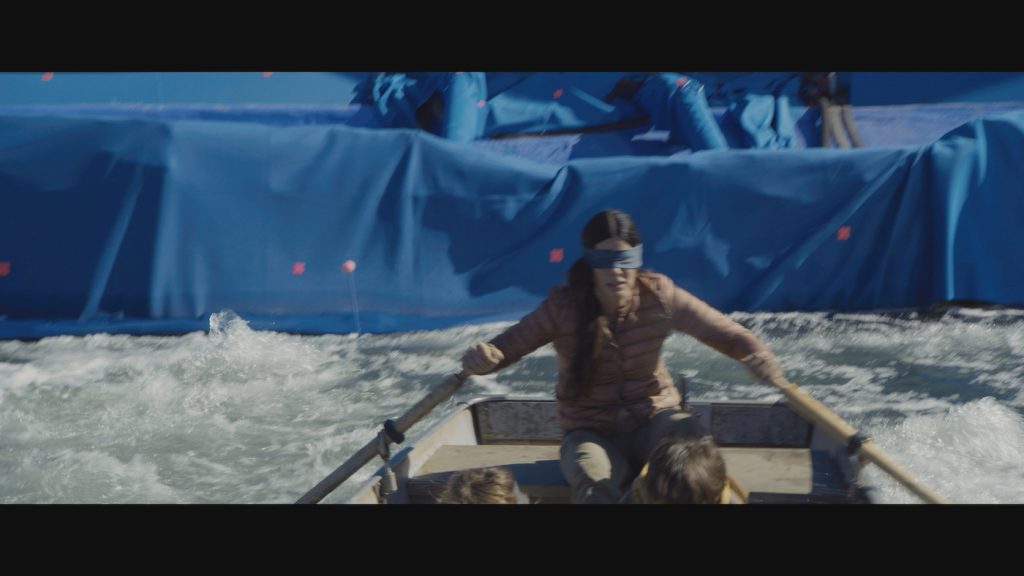
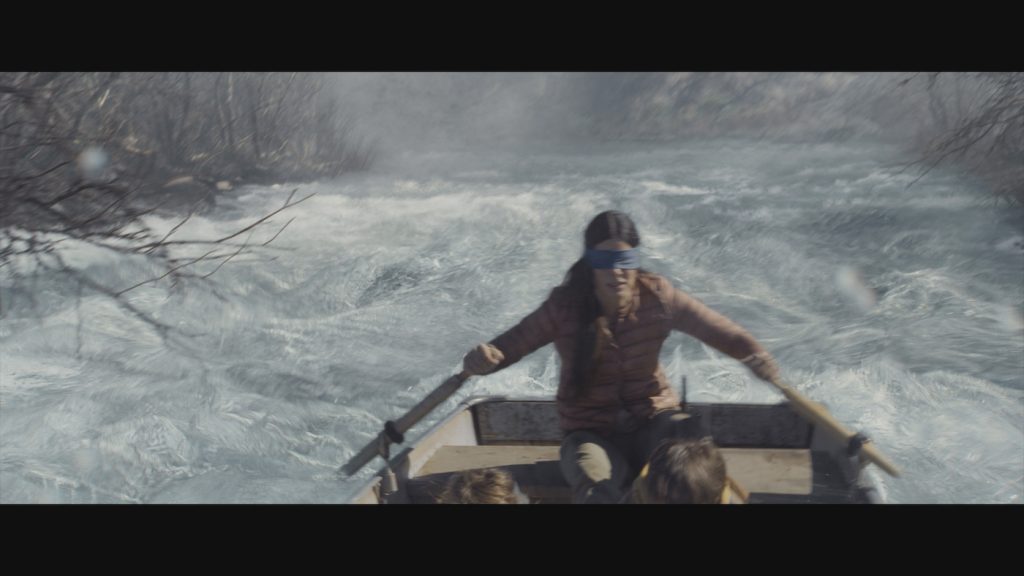
Bird Box has other unforgettable digital effects – notably, the viscous swirl (based on oil-in-water tests) of the characters’ irises when they see the creatures, and the titular Australian grass parakeets, who work themselves into a frenzy of screeches whenever the “presence” is nearby. Audiences would likely be surprised to hear that the birds they see throughout are mostly computer-generated. Taormina was “obsessive” about them. “The film is called Bird Box,” he points out.
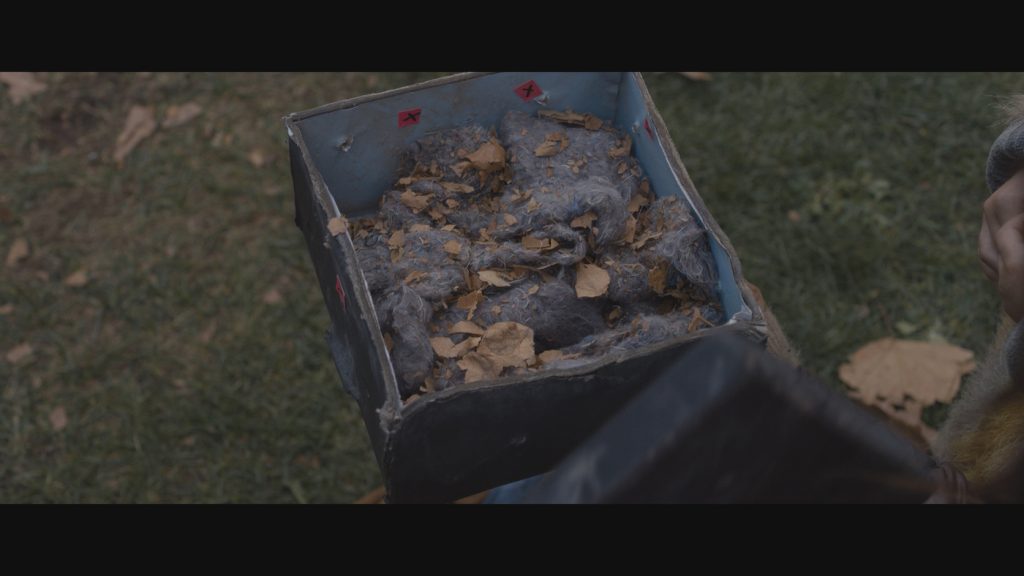
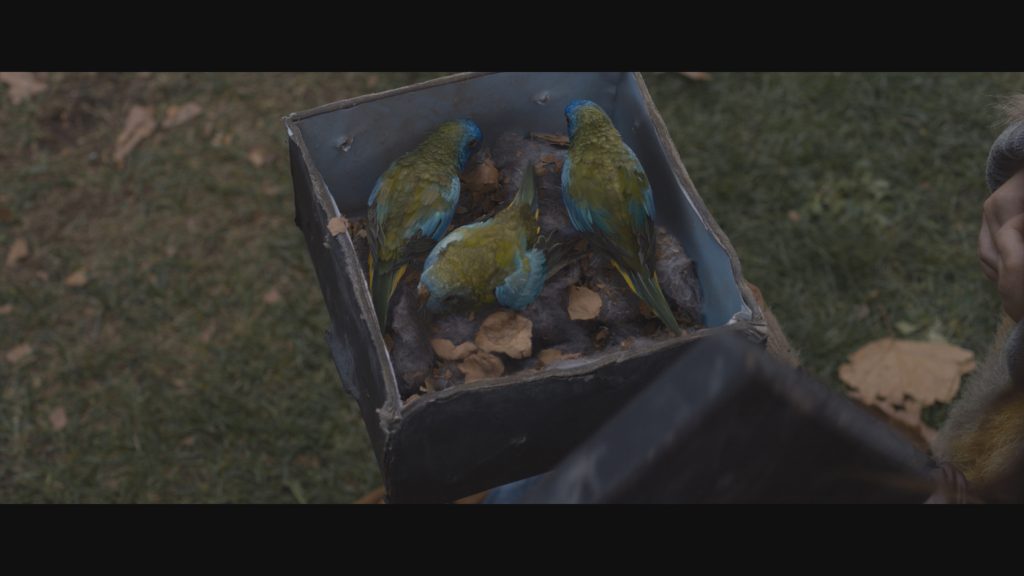
And what about the all-important effects that manifest the unseen arrival of the film’s marauding phantoms? Originally, Taormina and Bier conceived them as “nebulous shape-shifting shadows” that would reveal a silhouetted limb here or head shape there. It wasn’t until late in post-production that the decision was made to scrap any clear visual representation of them. Instead, we see the impact that they have on nature – primarily swirling “antigravity” leaves that push toward the victims, trees, and bushes that jerk wildly, and more subtly, passing shadows and hair-raising static. Taormina accurately likens the sum total to a hurricane. “The eye of the storm is the creature and the outer bands are the environmental impact,” he says.
The decision to hide the creatures builds suspense in the film, and, as it turned out, massive audience buzz in real life. Taormina won’t spill the beans, of course, but acknowledges that the film holds a massive clue. Some of Bird Box‘s characters can see the monsters and abet their chaos, including Gary, an oily, white-collar Brit who snivels his way into the house where Mallory and a group of other survivors have holed up. When everyone else is out of the living room, Gary spreads out a group of charcoal portraits of a grotesque creature on a coffee table and begins to draw a new one. The suggestion is clear: Gary is drawing the creatures, whom he rapturously praises as “beautiful.” Taormina confirms “that was more or less the intention.” However, he points out that the portraits represent Gary’s vision and “every character sees the creature in a different way.”
Bird Box fans wouldn’t want Taormina to spin it any other way.


